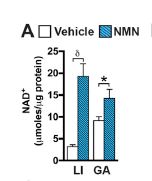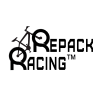MikeDC
"You are making claims based on a single faulty mice data." Let me see if I understand your premise. They perform a test to establish baseline NAD levels. 60 days later they perform the same test and come out with a percentage increase that threatens the Chromadex stock price and you deem that the mouse data is faulty?
"NR also increased NAD+ up to 100% from University of Washington clinical trial and 200% from Brenner paper all on just 1g of NR." If you accept that as truth, then why is it not plausible that 60 days of 400mg/kg of NMN raised NAD by 500%?
"The NMN study used 500mg/kg which is 37g for a human weighs 75kg." One of these days you will get your math correct. According to the allometric calculator at http://clymer.alterv...allometry.html the 400mg/kg dose converts to 3,833 mg for a 75 KG human. You came close, but you had the decimal point in the wrong place.
"Until you can prove that NMN can get into cells without converting to NR first, NMN is an inferior NAD+ precursor unless you target the kidney." It is the end result that counts and therefore a 500% increase of NAD after 60 days of NMN beats a 40 to 55% increase of NAD after 60 days of NR in my book any day.































 This topic is locked
This topic is locked

























